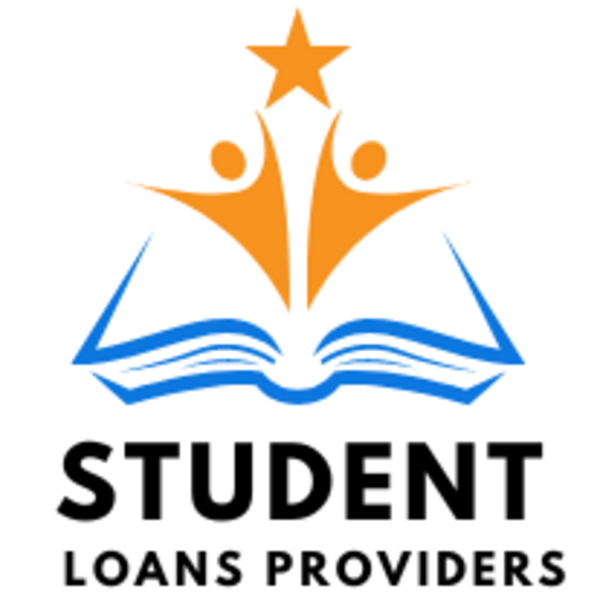In the realm of higher education financing, students often explore various avenues to fund their academic pursuits. Two popular options for U.S. students seeking financial assistance for studying abroad are foreign enrolled loans and study abroad loans. While they may seem similar at first glance, there are notable differences between the two that aspiring international students should consider before making a decision.
Foreign Enrolled Loans:
Foreign enrolled loans are tailored for U.S. students who choose to pursue their entire degree program at a foreign institution. These loans are disbursed directly to the student to cover tuition, living expenses, and other educational costs while studying overseas. The keyword here is "foreign enrolled," indicating that the student is officially enrolled in a foreign university or college for their academic program.
Study Abroad Loans:
On the other hand, study abroad loans are designed for U.S. students who participate in a short-term or semester-long study abroad program as part of their degree requirements at a domestic institution. Unlike foreign enrolled loans, study abroad loans are often intended to cover specific expenses related to the study abroad experience, such as tuition, housing, airfare, and other associated costs. These loans are disbursed either directly to the student or to their home institution, depending on the lender's policies.
Duration and Purpose:
The primary distinction between foreign enrolled and study abroad loans lies in the duration and purpose of the academic experience. Foreign enrolled loans cater to students pursuing their entire degree program abroad, while study abroad loans are geared towards those engaging in shorter-term international experiences as part of their domestic education.
Loan Disbursement:
Another significant difference is how the loans are disbursed. Foreign enrolled loans are typically disbursed directly to the student to manage their expenses independently. In contrast, study abroad loans may be disbursed to the student or their home institution, depending on the specific terms of the loan agreement.
Eligibility Criteria:
Eligibility criteria for these loans may vary based on factors such as enrollment status, academic performance, and program duration. Foreign enrolled loans may require students to be enrolled full-time at a foreign institution, while study abroad loans may have specific requirements set by the student's home institution and the study abroad program.
How to Apply for Student Loans:
Whether opting for a foreign enrolled loan or a study abroad loan, the process of applying for student loans follows similar steps:
Research Lenders: Begin by researching reputable lenders that offer loans tailored to your specific academic situation, whether it's studying abroad or enrolling in a foreign institution.
Compare Loan Options: Compare loan terms, interest rates, repayment options, and eligibility criteria among different lenders to find the best fit for your financial needs.
Gather Documentation: Gather necessary documentation, such as proof of enrollment, academic transcripts, financial statements, and any other required paperwork to support your loan application.
Complete the Application: Complete the loan application form provided by your chosen lender, ensuring accuracy and thoroughness in your responses.
Submit Additional Information: Be prepared to submit any additional information or documentation requested by the lender to finalize your loan application.
Review and Accept Loan Terms: Carefully review the terms and conditions of the loan offer, including interest rates, repayment schedules, and any associated fees, before accepting the loan agreement.
Disbursement of Funds: Once approved, the lender will disburse the loan funds according to the agreed-upon terms, either directly to you or to your educational institution.
Manage Loan Repayment: After completing your studies, actively manage your loan repayment by making timely payments, exploring deferment or forbearance options if needed, and staying informed about opportunities for loan forgiveness or debt relief.
Loan Forgiveness and Debt Relief:
In addition to traditional repayment options, U.S. students may also explore student loan forgiveness and debt relief programs to alleviate the burden of educational debt. These programs, offered by the federal government and some private lenders, provide eligible borrowers with opportunities to have a portion or all of their student loans forgiven or discharged under certain conditions.
To apply for student loan forgiveness, borrowers must typically meet specific criteria related to employment in public service fields, income-driven repayment plans, or other qualifying factors outlined by the forgiveness program. It's essential to carefully review the requirements and application process for each forgiveness program to determine eligibility and ensure compliance with program guidelines.
Best Student Loan Lenders:
When seeking the best student loans or education loans, it's crucial to consider factors such as interest rates, loan terms, repayment options, customer service, and lender reputation. Some of the best student loan lenders for U.S. students may include federal loan programs like Federal Student Aid (FSA), which offers various loan options with competitive rates and borrower protections.
Additionally, private lenders such as Sallie Mae, Discover Student Loans, Wells Fargo, and Citizens Bank offer a range of student loan products designed to meet diverse financial needs. By comparing loan offers from multiple lenders and carefully evaluating the terms and conditions, borrowers can make informed decisions to secure the best student loans for their educational journey.
In summary, while both foreign enrolled loans and study abroad loans provide valuable financial support for U.S. students pursuing international educational experiences, they serve distinct purposes and cater to different academic scenarios. Understanding the differences between these loan options, along with exploring opportunities for loan forgiveness and debt relief, empowers students to make informed decisions about financing their education and achieving their academic goals. By leveraging the resources and support available, students can navigate the complexities of student loan financing and embark on transformative educational experiences with confidence and financial security.
Commonly Asked Questions and answer What’s the difference between foreign enrolled and study abroad loans for U.S. students?abroad in Europe?
1. What is the difference between foreign enrolled and study abroad loans for U.S. students?
- Foreign enrolled loans are typically for students enrolled in a degree program at a foreign institution, while study abroad loans are for students from the U.S. studying temporarily abroad as part of their domestic degree program.
2. Can U.S. students apply for study abroad loans to finance their education in Europe?
- Yes, many U.S. students use study abroad loans to fund their education in Europe.
3. Are there specific eligibility criteria for foreign enrolled loans compared to study abroad loans?
- Yes, eligibility criteria may vary between lenders, but generally, foreign enrolled loans may require enrollment in a foreign institution, while study abroad loans may require enrollment in a U.S. institution with an approved study abroad program.
4. What are the typical repayment terms for foreign enrolled loans compared to study abroad loans?
- Repayment terms can vary, but foreign enrolled loans may offer longer repayment periods since they are designed for full degree programs, while study abroad loans may have shorter terms to coincide with the duration of the study abroad program.
5. Are interest rates different for foreign enrolled loans and study abroad loans?
- Interest rates may vary depending on the lender and the specific loan program, but generally, they may be comparable between the two types of loans.
6. Can study abroad loans cover expenses beyond tuition, such as housing and travel costs?
- Yes, study abroad loans can typically cover various expenses associated with studying abroad, including tuition, housing, travel, and other related costs.
7. Are there limits to the amount of funding available through foreign enrolled loans and study abroad loans?
- Yes, both types of loans may have borrowing limits, which can vary depending on factors such as the student's year in school, the cost of attendance, and the lender's policies.
8. Do U.S. students need a cosigner for foreign enrolled loans and study abroad loans?
- It depends on the lender and the student's credit history. Many international student loans require a creditworthy cosigner, while some study abroad loans may not.
9. Are there any specific visa requirements for U.S. students receiving foreign enrolled loans or study abroad loans for education in Europe?
- Visa requirements may vary depending on the country and the duration of the student's stay. It's essential to check the specific visa requirements for the country where the student will be studying.
10. Can U.S. students use federal financial aid for studying abroad in Europe?
- Yes, in many cases, U.S. students can use federal financial aid for approved study abroad programs. They should consult with their financial aid office for guidance.
11. Are there any scholarships available specifically for U.S. students studying abroad in Europe?
- Yes, there are various scholarships available for U.S. students studying abroad, including those specifically for European destinations. Students can explore options through their schools, external organizations, and government-funded programs.
12. How do U.S. students apply for foreign enrolled loans and study abroad loans?
- U.S. students can apply for these loans through private lenders or financial institutions that offer international student loan programs.
13. Are there any differences in the application process between foreign enrolled loans and study abroad loans?
- The application process may be similar, but students applying for foreign enrolled loans may need to provide additional documentation related to their enrollment in a foreign institution.
14. Can U.S. students with bad credit still qualify for foreign enrolled loans or study abroad loans?
- It may be more challenging for students with bad credit to qualify for these loans, but some lenders offer options that don't solely rely on credit history, such as requiring a cosigner.
15. Are there any restrictions on the types of degree programs that can be financed with foreign enrolled loans and study abroad loans?
- Generally, these loans can be used to finance undergraduate and graduate degree programs, but specific restrictions may vary depending on the lender.
16. Can U.S. students receive both foreign enrolled loans and study abroad loans simultaneously?
- It's possible but uncommon since these loans serve different purposes. However, students should check with their lenders and financial aid offices for guidance.
17. Are there deferment options available for foreign enrolled loans and study abroad loans?
- Deferment options may vary depending on the lender, but some may offer deferment while the student is still enrolled at least half-time.
18. Do foreign enrolled loans and study abroad loans have grace periods after graduation?
- Grace periods, during which students are not required to make payments, may vary depending on the lender and the specific loan program.
19. Can U.S. students refinance their foreign enrolled loans and study abroad loans after graduation?
- Yes, some lenders offer refinancing options for international student loans, allowing borrowers to potentially secure better terms or lower interest rates.
20. What should U.S. students consider when choosing between foreign enrolled loans and study abroad loans for their education in Europe?
- Students should consider factors such as their long-term educational goals, the duration of their study abroad experience, repayment terms, interest rates, and eligibility requirements when deciding between these loan options.














